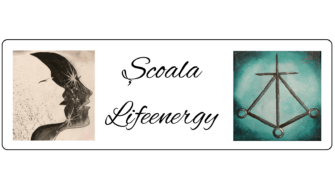
Carl Gustav Jung, one of the most influential psychologists of the twentieth century, developed the concept of “Shadow” to describe those parts of ourselves that we repress or deny. The shadow contains all the aspects that we do not want to recognize about ourselves and that we consider unacceptable.
The shadow, according to Jung, represents the set of traits, instincts and emotions that we consider unacceptable or shameful and that we repress in the unconscious. These aspects can include fears, desires, aggressive impulses, envy, greed, weaknesses, and all those traits that we reject because they do not align with the self-image we want to project. The formation of the shadow begins in childhood, when we learn which behaviors are acceptable and which are not. This learning is influenced by parents, society, education and culture. The behavioral traits that we repress in order to conform to social expectations and to be accepted accumulate in the unconscious, forming the Shadow.
Shadow Manifestation
The shadow manifests itself in various ways in our daily lives, often without us being aware of its influence. Common manifestations include:
- Projection: When we attribute to others the negative traits that we do not recognize in ourselves. For example, if we have aggressive tendencies that we do not accept, we can see aggression predominantly in others.
- Exaggerated reactions: Intense or disproportionate emotional reactions to certain situations can indicate the presence of the Shadow. These reactions are often triggered by aspects of our personality that we repress.
- Compulsive behaviors: The shadow can influence compulsive behaviors or addictions, which serve as mechanisms to avoid confronting unpleasant aspects of the self.
- Dysfunctional relationships: Repeated conflicts and negative patterns in personal relationships can be a sign of the Shadow’s influence. These patterns often reflect the internal struggles we have with the rejected parts of us.
Shadow Integration
The process of integrating the Shadow, also known as “individuation,” is essential for personal development and for achieving a state of psychological wholeness. Integration involves recognizing, accepting, and integrating these repressed parts of the self into our consciousness. Here are some ways we can work with our Shadow:
- Self-reflection and journaling: Writing about our emotions and experiences can help raise awareness of repressed issues. Self-reflection questions such as “What behaviors of others irritate me the most?” or “What hidden fears do I have?” can reveal clues about our Shadow.
- Therapy and counseling: Working with a therapist can facilitate the exploration and integration of the Shadow.
- Dream analysis: Jung considered dreams to be a gateway to the unconscious. Dream analysis can reveal aspects of the Shadow and provide clues as to how they can be integrated.
- Conscious projection: Carefully observing tendencies to project negative traits onto others and reflecting on what these projections reveal about ourselves.
- Creative practices: Art, writing, dance, and other forms of creative expression can help explore and integrate repressed aspects of the self.
The integration of the Shadow can be deepened through spiritual approaches and the Family Constellations method:
- Meditation and Prayer: These practices can help to connect with the inner self and release negative energies. Regular meditation helps to calm the mind and become aware of the Shadow.
- Cleansing Rituals: Cleansing rituals, such as purification with sage smoke or spiritual baths, can help to release negative energies and restore energy balance.
- Exploring Transgenerational Trauma: Family Constellations, a therapeutic method developed by Bert Hellinger, explores family dynamics and inherited traumas. These sessions help to identify and heal traumas passed down from generation to generation, which can influence the formation and manifestation of the Shadow.
- Family Structure Reconstruction: In a family constellation session, a therapist facilitates the reconstitution of family structure and dynamics to reveal inherited conflicts and traumas. This process can bring clarity and emotional liberation, allowing for the integration of repressed aspects of the self.
Benefits of Shadow Integration
The integration of the Shadow has numerous benefits for our mental and emotional health, as well as for our interpersonal relationships:
Accepting and integrating the Shadow allows us to live more authentically, express ourselves more freely, and be more congruent with ourselves.
Understanding and accepting our own Shadow helps us develop empathy and compassion for others, recognizing that we all have dark sides.
By integrating the Shadow, we can reduce internal and external conflicts, learning to better manage our emotions and reactions.
The individuation and integration of the Shadow are essential for personal development and for achieving a state of psychological wholeness.
Accepting the Shadow can free up creative resources and encourage authentic expression in art and life.
Conclusion
The shadow, according to Jung’s perspective, represents those parts of ourselves that we repress or deny. Although it can be scary to face these aspects of the self, the integration of the Shadow is essential for personal development and for achieving a state of psychological wholeness. Through self-reflection, therapy, dream analysis, creative practices, spiritual approaches, and the Family Constellations method, we can bring these repressed parts into consciousness, accept them, and integrate them, thus living a more authentic and balanced life. The shadow is not only a dark side of us, but also a source of creative potential and personal growth. By confronting our Shadow, we pave the way for a richer and more meaningful life.
Our Therapies
-

Acupunctură (Londra)
60.00£ -

Constelații Sistemice / Familiale De Grup (Londra)
150.00£ -

Terapii Individuale
150.00£ -

Constelații Online – Karma (Grup)
60.00£ -

Constelații Online – Copilul Interior (Grup)
60.00£ -

Constelatii Online – Cele 5 elemente (Grup)
Price range: 60.00£ through 90.00£ -

Respirație Conștientă (Londra)
650.00£ -

Hipnoterapie / Regresie
150.00£ -

Constelații Online – Adicții (Grup)
60.00£ -

Constelații Individuale Online
90.00£ -
Sale!

1. Reconectarea cu energiile primordiale
Original price was: 42.00£.0.00£Current price is: 0.00£. -
Sale!

2. Reconectarea cu puterea pământului
Original price was: 42.00£.0.00£Current price is: 0.00£.




0 Comments